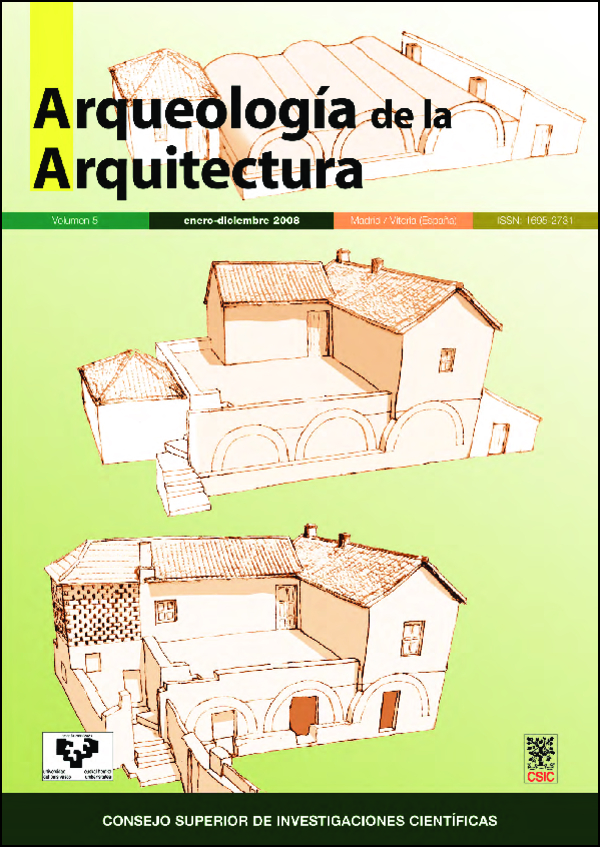The proto-Romanesque and Romanesque in Santiago del Burgo (Zamora). Two projects, one church
DOI:
https://doi.org/10.3989/arq.arqt.2008.91Keywords:
Wall stratigraphy, Building process, Stonecutting, Mason’s marks, Convent, 11-12th centuriesAbstract
Dated to the late 12th century, the unknown building history of the church of Santiago del Burgo (Zamora) has been uncovered thanks to the archaeological analysis. This building is actually the result of two buildings projects and its analysis enables to deal with the building activity issue at the end of the 11th and the beginnings of the 12th centuries, period traditionally framed among the proto-Romanesque and the Romanesque styles.
Downloads
Downloads
Published
How to Cite
Issue
Section
License
Copyright (c) 2008 Consejo Superior de Investigaciones Científicas (CSIC) - Universidad del País Vasco/Euskal Herriko Unibertsitatea (UPV/EHU)

This work is licensed under a Creative Commons Attribution 4.0 International License.
© CSIC. © UPV/EHU. Manuscripts published in both the print and online versions of this journal are the property of Consejo Superior de Investigaciones Científicas and Universidad del País Vasco/Euskal Herriko Unibertsitatea, and quoting this source is a requirement for any partial or full reproduction.
All contents of this electronic edition, except where otherwise noted, are distributed under a Creative Commons Attribution 4.0 International (CC BY 4.0) licence. You may read here the basic information and the legal text of the licence. The indication of the CC BY 4.0 licence must be expressly stated in this way when necessary.
Self-archiving in repositories, personal webpages or similar, of any version other than the final version of the work produced by the publisher, is not allowed.















